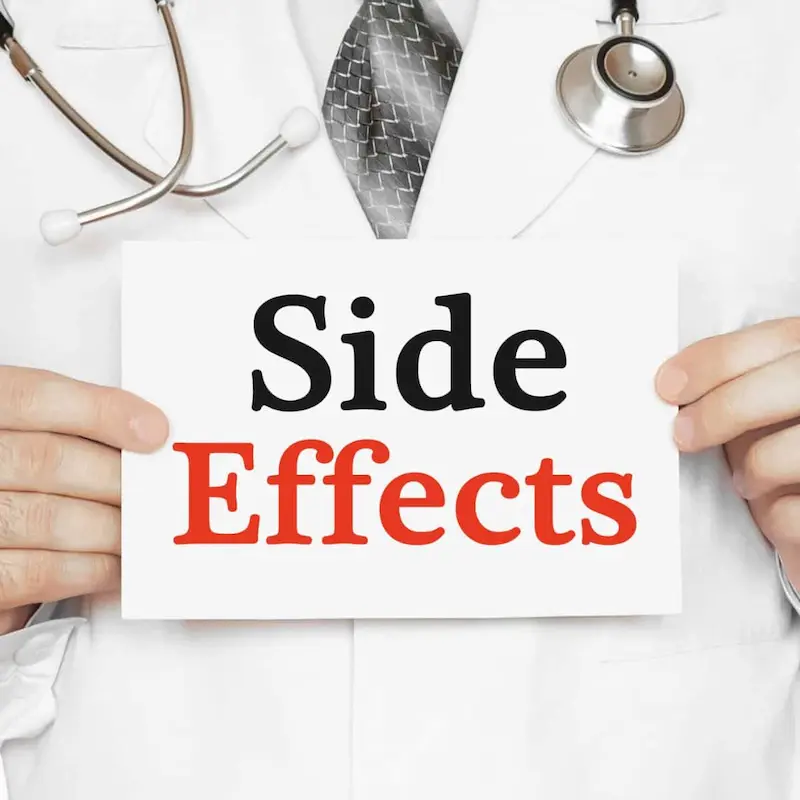Anabolic steroids have long been associated with bodybuilding and athletes looking to gain a competitive edge through enhanced muscle growth and recovery. However, their role extends into the medical field, particularly in aiding post-surgical recovery. After surgery, patients often face significant muscle loss and a lengthy healing process. Anabolic steroids, which are synthetic variations of the male sex hormone testosterone, have properties that can stimulate protein synthesis and muscle regeneration, which may be beneficial during post-surgical rehabilitation.
While they share a common association with steroids, anabolic steroids are distinct from corticosteroids, which are used to reduce inflammation and are commonly prescribed for a variety of medical conditions. Anabolic steroids, by contrast, are primarily concerned with the building and repair of muscle tissue. Post-surgical recovery is a critical period where the body needs to repair not just the surgical incision but also rebuild atrophied muscles and regain strength. In this context, anabolic steroids have been examined for their potential to accelerate this process, aiding in more rapid and complete recovery.
There is a delicate balance to be struck with the use of anabolic steroids in post-surgical patients, as the potential for speeding up recovery must be weighed against the risks of side effects and complications. Protocols that include anabolic steroids must be carefully designed by medical professionals to optimize healing while minimizing any adverse outcomes. As research continues to evolve, advanced therapies combining anabolic steroids with other treatments are being considered to improve patient outcomes after surgery.
Quick Summary
- Anabolic steroids may promote muscle rebuilding and strength recovery after surgery.
- They differ from corticosteroids, which are anti-inflammatory drugs, not muscle builders.
- Proper medical protocols are essential to balance benefits and risks when using anabolic steroids post-surgery.
Anabolic Steroids vs. Corticosteroids

Understanding the differences between anabolic steroids and corticosteroids is essential for their use in medical practice, particularly in the context of post-surgical recovery. These compounds differ significantly in structure, function, and their implications for patients.
Chemical Structure and Function
Anabolic Steroids: Structurally similar to testosterone, anabolic steroids enhance muscle growth and are synthetically produced. They function by mimicking the effects of naturally occurring testosterone, promoting protein synthesis, and muscle cell growth.
- Chemical Structure: Carbon skeleton resembling testosterone.
- Primary Function: Increase protein synthesis in cells, leading to muscle growth.
Corticosteroids: These are a class of steroids that mirror the effects of hormones produced by the adrenal glands. Principally, they are involved in metabolic processes related to stress responses, regulation of inflammation, and immune function.
- Chemical Structure: Four-ring structure but vary from anabolic steroids.
- Primary Function: Modulate immune response and reduce inflammation.
Applications in Medical Practice
Anabolic Steroids
- Usage: Primarily employed to treat muscle wasting conditions, delayed puberty, or diseases leading to loss of muscle mass such as cancer and AIDS.
Corticosteroids
- Usage: Utilized widely in treating a range of inflammatory and autoimmune disorders such as asthma, rheumatoid arthritis, and lupus. Their role in reducing inflammation is critical in managing chronic conditions.
Implications for Surgical Patients
Anabolic steroids may be considered in post-surgical scenarios to potentially enhance tissue repair and muscle regeneration. However, their involvement is carefully weighed against possible complications.
- Complications: Risk of liver damage, hormonal imbalance, and other side effects.
Conversely, corticosteroids might be administered to minimize inflammation post-surgery to aid recovery, though their impact on the immune response and potential for delayed wound healing warrants cautious administration.
- Inflammation Management: Critical for reducing postoperative swelling and pain.
- Immune Response: Excessive use may suppress immune system, hindering recovery.
Role of Anabolic Steroids in Muscle Recovery

Anabolic steroids have shown to play a crucial role in the post-surgical recovery phase, primarily by preventing muscle atrophy, promoting protein synthesis, and enhancing muscle mass retention following periods of immobilization or reduced activity.
Preventing Muscle Atrophy
After surgery, patients are often immobilized, which can lead to muscle atrophy—the reduction of muscle mass. Anabolic steroids facilitate muscle maintenance in the absence of physical activity. For instance, studies indicate that these compounds can help sustain muscle fiber size, partly by activating satellite cells that are essential for repairing damaged muscle tissue.
Promoting Protein Synthesis
Protein synthesis is a fundamental biological process where cells build proteins. These proteins are crucial for muscle repair and growth. Anabolic steroids increase the rate of protein synthesis within cells, providing the necessary building blocks to speed up the recovery of muscle tissue post-surgery. This action aids in the rehabilitation process, allowing patients to progress to exercise and resistance training more rapidly.
Enhancing Muscle Mass Retention
Maintaining muscle mass during recovery is vital for regaining strength and function. Anabolic steroids have been used to prevent muscle loss during periods of inactivity, making subsequent rehabilitation efforts more effective. Research shows that these compounds support the preservation of muscle mass by interacting with androgen receptors, which play a critical role in muscle health.
References
- Study on anabolic steroids maintaining muscle mass: https://www.ncbi.nlm.nih.gov/pmc/articles/PMC2439524/
- Research on the role of resistance training and anabolic steroids in protein synthesis: https://www.sciencedirect.com/science/article/abs/pii/S1043276013000878
Anabolic Steroid Use in Post-Surgical Healing

Anabolic steroids have been explored for their potential to improve post-surgical recovery by affecting wound healing, reducing surgical stress, and optimising nutritional status.
Impact on Wound Healing
Anabolic steroids are known to promote protein synthesis, which can be crucial in repairing tissues damaged by surgical procedures. Wound healing involves a complex cascade of events where anabolic steroids might enhance the body’s ability to regenerate tissues. A key aspect is the modulation of the inflammatory response, which is essential in the early phase of wound repair. Studies have noted that anabolic steroids may help in reducing inflammation and thus aiding the healing process.
Reduction of Post-Surgical Stress
Surgery induces a stress response characterized by elevated levels of cortisol and a catabolic state which can impede recovery. Anabolic steroids may help counteract this by reducing cortisol production and supporting an anabolic or tissue-building state. By potentially modulating the release of growth hormone and insulin, anabolic steroids could contribute to a more balanced hormonal profile post-surgery, thereby aiding the recovery process.
Optimizing Nutritional Status
After surgery, maintaining an optimal nutritional status is critical for healing. Anabolic steroids might improve protein metabolism and enhance the utilization of nutrients, thus supporting tissue repair and growth. Since they have been shown to increase appetite, they could be beneficial in ensuring adequate calorie intake during recovery, especially when patients experience postoperative nausea or poor appetite.
Potential Risks and Complications

While anabolic steroids can aid in post-surgical recovery, they carry potential risks and complications that must be carefully considered. These risks can range from infection to long-lasting hormonal and metabolic disturbances.
Infection Risks
Patients using anabolic steroids post-surgery may experience a heightened risk of infection due to potential immune function alterations. Anabolic steroids can suppress the immune response, which is crucial for fighting off infections, especially in hospital environments where exposure to pathogens is more likely.
Hormonal Imbalance and Immunosuppression
Anabolic steroids affect the balance of hormones in the body, such as insulin, cortisol, and glucagon. This imbalance can lead to immunosuppression, making it difficult for the body to recover from surgical stress. Additionally, individuals with diabetes may find managing their insulin levels more complex when anabolic steroids interfere with glucose regulation.
Long-term Metabolic Effects
The use of anabolic steroids in post-surgical recovery can raise concerns about long-term metabolic effects. These can include the development of osteoporosis, unfavorable changes in lipid profiles, and alterations in carbohydrate metabolism. The long-term use of steroids must be monitored, especially in aging populations who may already be at risk for metabolic bone diseases.
References
Advanced Protocols and Therapies

After surgery, the use of advanced protocols and specific therapies aids in speeding up recovery and reducing complications. These include the Enhanced Recovery After Surgery program, and the application of anabolic steroids like nandrolone and oxandrolone, which are integrated with traditional therapies.
Enhanced Recovery After Surgery (ERAS)
Enhanced Recovery After Surgery (ERAS) protocols represent comprehensive care packages designed to minimize postoperative stress, reduce complications, and expedite the rehabilitation process. Key components for hip replacement and total knee arthroplasty typically include preoperative counseling, multimodal analgesia, and early mobilization.
Application of Nandrolone and Oxandrolone
Anabolic steroids such as nandrolone decanoate and oxandrolone have been investigated for their potential in post-surgical recovery. Nandrolone can facilitate tissue repair and muscle growth, while low doses of oxandrolone have shown to improve lean body mass retention post-operation which can be critical for rehabilitation outcomes.
Integrating Anabolic Steroids with Traditional Therapies
The thoughtful integration of anabolic steroids like nandrolone and oxandrolone with conventional therapies can enhance recovery rates. This approach needs careful dosing, monitoring for side effects, and should align with each patient’s specific post-surgical rehabilitation plan.
References
- Enhanced Recovery After Surgery Protocols: https://www.ncbi.nlm.nih.gov/pmc/articles/PMC4209233/
- Anabolic Steroids in Post-Surgical Recovery: https://www.ncbi.nlm.nih.gov/pmc/articles/PMC4744441/
Frequently Asked Questions

In this section, readers will find essential information addressing common inquiries about the use of anabolic steroids in the context of post-surgical recovery.
What are the benefits of using anabolic steroids in post-surgical recovery?
Anabolic steroids can promote cell growth and enhance tissue repair, which may expedite the recovery process after surgery. Their ability to improve nitrogen retention and protein synthesis in the body can lead to quicker wound healing and return of function.
How do anabolic steroids facilitate tendon and ligament repair?
They stimulate collagen synthesis, which is crucial for the repair of ligaments and tendons. Additionally, anabolic steroids can increase the production of growth factors that influence the healing process, making these structures more resilient to future stress.
What is the role of anabolic steroids in muscle recovery after surgery?
Post-operatively, anabolic steroids are believed to counteract muscle atrophy and strength loss commonly experienced after surgery. This is due to their role in promoting an anabolic state that supports muscle tissue growth and repair.
Are there any risks associated with using anabolic steroids for injury recovery?
While effective, anabolic steroids come with potential risks such as hormonal imbalances, cardiovascular issues, and liver damage. Their use must be carefully evaluated and monitored by medical professionals to avoid adverse effects.
How do medical professionals utilize steroids in post-operative care?
Medical professionals may prescribe anabolic steroids in a controlled manner to support healing. They consider patient history, the type of surgery, and the individual’s overall health to determine the appropriate use and dosage.
What are the best practices for anabolic steroid use in the context of surgical rehabilitation?
Best practices include a medical professional’s supervision, adhering to prescribed dosages, and using the minimum effective dose for the shortest duration necessary to achieve desired recovery outcomes.
References
- “Anabolic Steroids.” MedlinePlus, U.S. National Library of Medicine. Accessed 1 Feb 2024, https://medlineplus.gov/anabolicsteroids.html
Dr. Grant Fourie, a specialist in male hormones, is based in Cape Town, South Africa. He provides comprehensive treatments for conditions related to low testosterone, such as erectile dysfunction, fatigue, and mood changes. His methods include hormone replacement therapy and other modern treatment options.
Contact me via email or phone to book personal appointment in my clinic: The Village Square, Cape Town - South Africa



